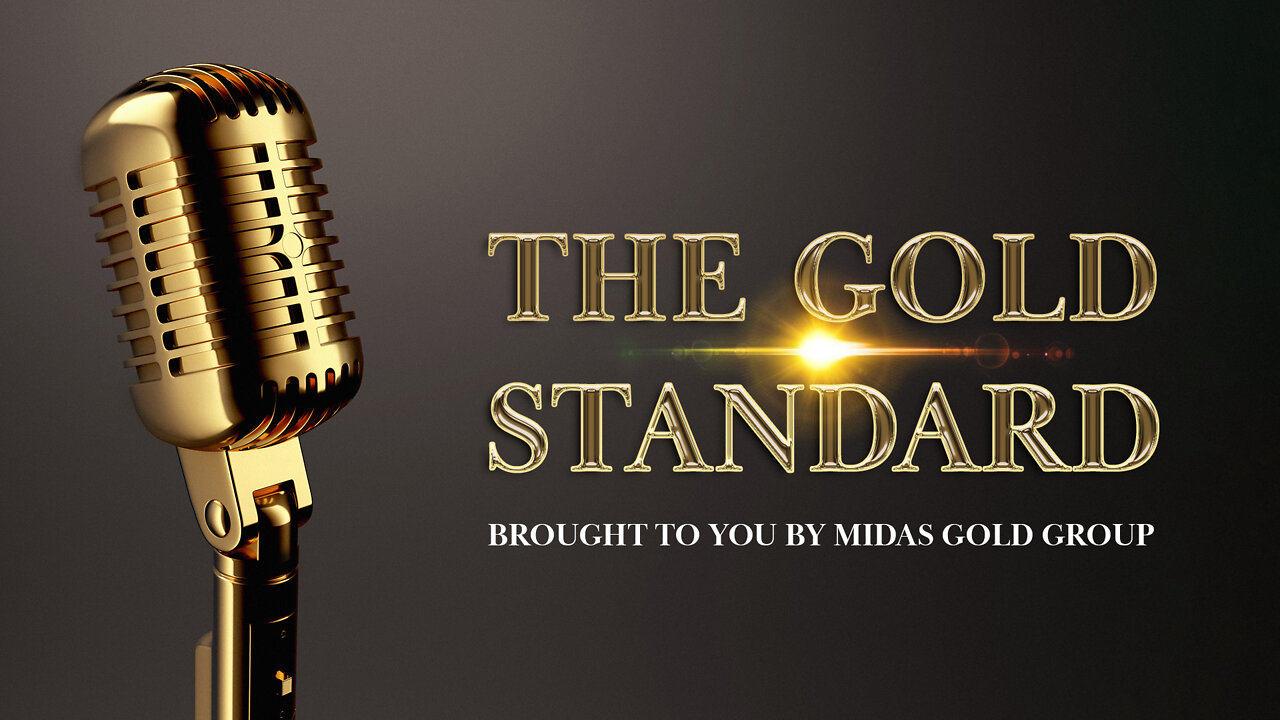Premium Only Content

Recession (part 2) | The Gold Standard #2217
https://www.midasgoldgroup.com/
April started with news about the inverted yield curve, which measures the difference in interest rates between short-term and long-term bonds. An inverted yield curve almost always signals an oncoming recession. Host Dave Deno and his guest, Ken Russo, VP of the Midas Gold Group, continue their discussion on signs of a recession.
Warning signs of a recession continue to show up in many other areas, including overt warnings in the form of headlines and articles from some of the country’s leading financial authorities. These bits of rare transparency are rare.
The Bank of America Warning
An article reports that the Bank of America warns that high inflation is a credible threat to the “economic recovery” that began just two years. What economic recovery? The government printed lots of money and sent people checks. What about supply chain disruptions and plunging growth in this country and worldwide.
How does inflation Relate to Recession?
Although not the leading cause of a recession, inflation and recession are interconnected; of course, high-interest rates also play an essential role. When inflation rises higher than average wages, people start looking for ways they can cut costs. Rising inflation becomes a problem like cancer cell growth. As Ken often points out, we’re in the giant everything bubble there has ever been in the history of civilized man. Eventually, these bubbles are going to start popping. When that happens, get ready for a tsunami of financial calamities.
Aside from the uber everything bubble, central banks’ typical response to high inflation is tightening monetary policy. Usually, the opening act just before the arrival of a recession. The tightening of fiscal policy means raising the federal funds rate. While it reduces inflation, it causes lower economic growth.
A healthy economy is an ongoing balancing act. The US economy has been unbalanced for decades. The Federal Reserve manages the currency supply and uses other tools such as raising and lowering interest rates to stabilize the economy. It seems the Fed never gets the balancing act right. It’s always too much or too little. The US hasn’t had a healthy economy since before the 1970s. Growth was all but flat-lined together with runaway inflation. Between 1970 and 1980, inflation grew from five-point five percent to fourteen percent. Today we are at eight-point fifty-four percent inflation and climbing.
Rising inflation means prices are soaring because the Fed prints too much money. Of course, the problem is easy to resolve: stop printing money. But the solution also means the government will have to stop overspending and balance the budget, which they’re not willing to do for political reasons. It’s a convoluted mess, to be sure, and it’s made even more confounding because of the lies, misdirection, and misinformation.
The Bank of America article stated it’s not calling for a recession in the US but simply “raising the specter of a slowdown.” It would be better to call it an economic meltdown or a stock market collapse. As Ken mentions on this program, “Maybe someone could be transparent and truthful. When you have such a risky environment predicated on money printing, someday the chickens will come home to roost.”
Do you want the Fed controlling your bank and retirement accounts via digital currency?!
A Risky Environment
Trying to make sense of the ebb and flow of the nation’s economy is tricky stuff, and the truth be known, nobody has a crystal ball to foresee how all of this will play out. But we can do more than merely fasten our seatbelts and hold on for the ride. We can take the opportunity to diversify our holdings into precious metals, which have proven themselves throughout history to be a reliable store of value.
Featured Precious Metal Product
This episode’s featured precious metal product is the second-oldest government-backed gold bullion coin. The one-ounce Canadian Gold Maple Leaf arrived on the global marketplace in 1979, twelve years after the first South African Krugerrand debuted. Next to the Gold American Eagle, the Gold Canadian Maple Leaf is the world’s most popular gold bullion coin.
The many security features integrated into the coin’s design are the radial lines on the obverse and reverse of the coin. The obverse has a profile of Queen Elizabeth II. The reverse features Canada’s iconic national symbol, the Maple Leaf.
______________________________________________________________________________
Listen to The Gold Standard: https://www.midasgoldgroup.com/gold-standard-radio-show/
Gold IRA: https://www.midasgoldgroup.com/gold-ira/
Invest in Gold: https://www.midasgoldgroup.com/buy-gold/
Guide to Owning Bullion & Coins: https://www.midasgoldgroup.com/bullion-guide/
Read the latest precious metals news: https://www.midasgoldgroup.com/news/
-
 25:08
25:08
Midas Gold Group
9 months agoIf the System Collapsed, What Would Happen to My Money? | The Gold Standard 2432
52 -
 LIVE
LIVE
TheBubbaArmy
20 hours agoDiddy’s Dark Secrets EXPOSED: Shocking Trial Revelations! - Bubba the Love Sponge® Show | 5/23/25
10,345 watching -
 55:59
55:59
Kitco NEWS
13 hours agoMarket Echoes 2001 Crash as Gold and Credit Flash Red | Larry McDonald
10.6K4 -
 6:58
6:58
Tactical Advisor
12 hours agoBREAKING! Hearing Protection Act Passes US House
6.94K3 -
 16:32
16:32
T-SPLY
15 hours agoCongresswoman Gets Busted Exposing Her Own Crime!
7.45K6 -
 28:10
28:10
JasminLaine
15 hours agoCarney Gets His WORST Grilling Yet Over Trump Hypocrisy—PANICS and SPIRALS
9.98K13 -
 2:25:56
2:25:56
Professor Gerdes Explains 🇺🇦
1 day agoUkraine War’s Turning Point: What’s Next?
4.49K4 -
 5:21
5:21
The Shannon Joy Show
12 hours ago🚨 AI IRS Crackdown — Small Businesses Targeted First!
6.23K5 -
![Hearing Protection Act [COMPLETE] Passes the House || BUY'EM While You Still Can](https://1a-1791.com/video/fww1/8a/s8/1/X/D/D/M/XDDMy.0kob-small-Hearing-Protection-Act-COMP.jpg) 11:08
11:08
VSOGunChannel
16 hours ago $0.70 earnedHearing Protection Act [COMPLETE] Passes the House || BUY'EM While You Still Can
5.82K3 -
 31:34
31:34
Uncommon Sense In Current Times
14 hours agoInside Planned Parenthood | Abortion Pills, Profits & Abuse | Dr. Ingrid Skop
6.7K1